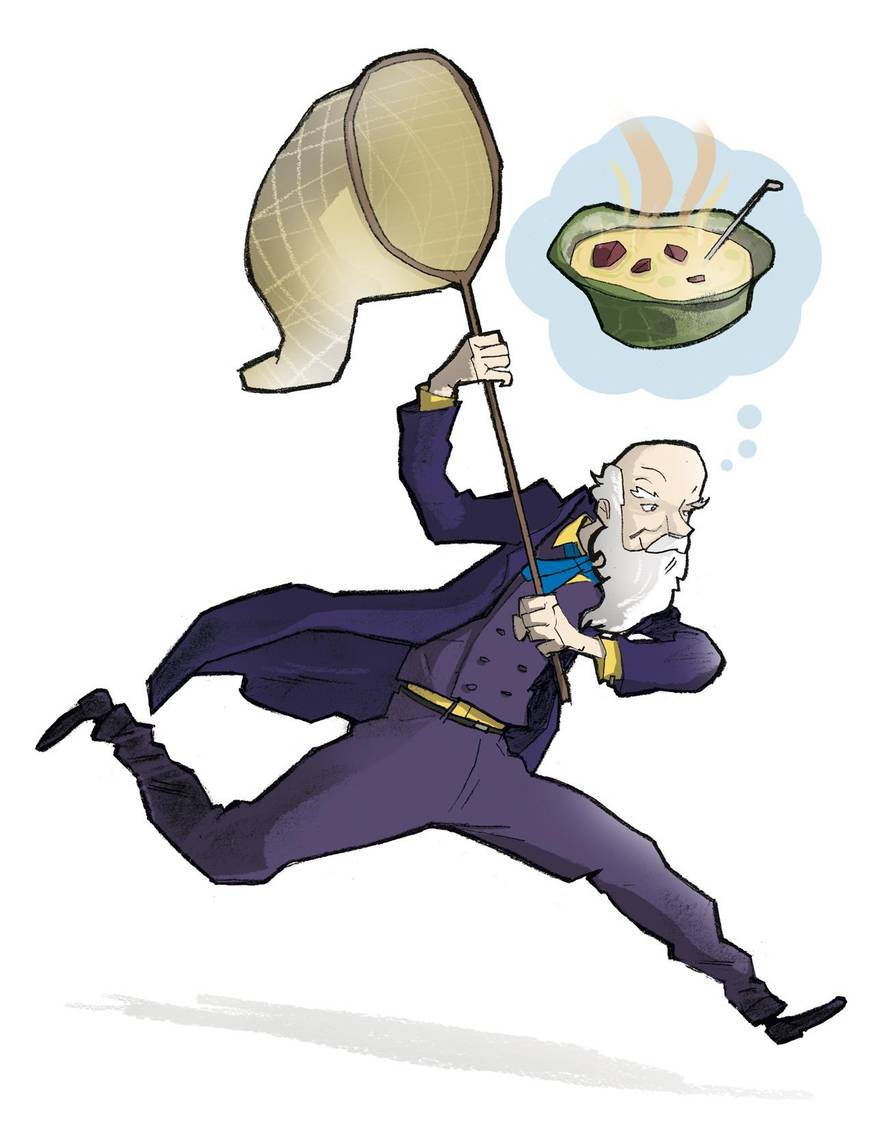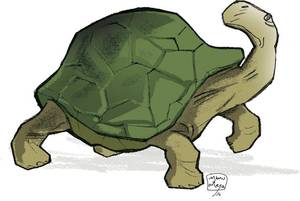Plate of Darwin
In the trunk of an old tree he saw two extravagant beetles. They did not have them in the collection. The two immediately caught them in one hand. And then he saw a different third. It could not be allowed to escape and to be able to catch it put the right hand in the mouth... "Oh, he burned my tongue and released an extremely acidic liquid. I ended up losing both the mouth and the third," Charles Darwin wrote in his autobiography.
It would not be the last time I introduced strange animals into the mouth, although the following would not have been raw at least. While studying theology at Cambridge, Darwin and 7 other students founded The Glutton Club. Every week the club members met to dine in their classroom alternately. The club was famous for its love to eat "birds and beasts unknown to human taste": squirrels, rodents, owls, hawks, bird bulls... He himself hunted. He was a passionate and skilled hunter, who always had the shotgun hung on the wall of the room.
The last supper was when they dared to eat an old urubi. The meat of this nocturnal bird was fibrous and annoying, "indescribable" according to one of its members. They did no more dinners, but the club members were friends throughout their lifetime and would later remember with much nostalgia those dinners.
Darwin also went out for dinner outside the campus. He particularly liked to dine at the home of botanist professor John Stevens Henslow. In addition, he met very important people in his career in the Hensloween. And it was Henslow himself who opened the doors of the Beagle.
It was also related to the table. In fact, the captain of Beagle, Fritz Roy, wanted a diner to make him a good company in the meals of long trips to the sea. And he told Henslow. He recommended Darwin. I knew him well and knew he was a perfect person for it. When Roy saw Darwin, he hardly accepted him. He did not like his nose, it was the nose of an unsafe person, according to Roy. Finally he accepted, however, and warned him that the dinners of Beagle would be dinner without luxury: "No wine and the simplest dinners".
The first weeks were much worse for Darwin who warned Roy. By dizziness I spent the day in hammocks, eating only cookies and raisins. When they stopped in Cape Verde, he first tried the bananas and ate a lot of tamarinds and oranges. There he also tasted his first tropical dish: a barrack.
Despite having suffered a lot from the Mareos during the whole trip, Darwin ended up being much more diner than the captain on that expedition: He became the official naturalist of Beagle. With the same passion I caught that work and discovered new foods in the new lands.
When Beagle stayed anywhere, they collected everything that the land or the sea offered them to fill the pantry of the boat. Hunters hunted down geese, ducks, partridges, rabbits, seals, etc. And the fishermen fished everything they wanted. If in the nets some unknown animal came, after eating, it would gather the skin and the skeleton and Darwin cataloged and described them.
When they were at sea, Darwin himself often threw hooks and Roy and both often dined the capture of Darwin's day accompanied by rice, peas and pumpkin. On the ground he enjoyed hunting. He liked the long horse expeditions, hunting for the day's dinner and camping every day in different places: "heaven ceiling and earth table". He hunted and ate iguanas, jaguars, llamas, foxes, pumas, condors, deer of pampa, capibaras, guaneses, etc.
However, there was an animal that Darwin wanted to catch but did not get it. The kangaroos called it "petisse ostrich". It was a smaller nuance than the normal and very difficult to see. Six years before Darwin, it was one of the few animals that did not find the famous French naturalist Alcide d'Orbigny, who described thousands of species. And what did not get the French rival who wanted to get Darwin. But he didn't get it either.
The common Ñandu were hunted many times. "Ñandu and armadillo are some of the favourite dishes on the boat," wrote Darwinek.The first has a taste of beef and the second, roasted without shell, looks like a duck." The ñanua eggs were also appreciated, while Darwin's favorite dish was the avocado (a large rodent): "the best meat I have ever tried".
Darwin was always willing to try everything, but he also had his limits. Once in Patagonia, the kangaroos took one of their most coveted dishes. This white-white meat liked the deer, but it gets upset when they told him it was the fetus of a puma.
On January 3, 1834, while in southern Argentina, a member taught Darwin what he hunted. "A young Ñandu", thought Darwin and ate for dinner!" expelled. In the middle of the dinner Darwin shouted: "Wait! All arrested!" He realized that what they were eating was not a young vulgar nuance, but a small ñandu that was being made. The one who remained in the dishes and picked up some heads, neck, legs and feathers taken from the kitchen and sent them to London. With this sample they described Rhea darwinii, or the nuance of Darwin, the new species that was declared (then became R. pennata).
In Galapagos, iguanas and turtles were eaten. According to Darwin, iguanas were delicate for stomachs without prejudice. And he learned that with young turtles a great soup was made, and that the roasted turtle was also beautiful, like the armadillos sticks, cooked in their green fat if eaten inside the shell. In addition, they were excellent animals to carry them on board, survivors for months on the back, without drinking water. Beagle left Galapagos with 48 turtles.
“This entry is #Scientific Culture I. Participate in the festival”








